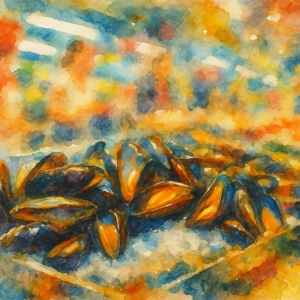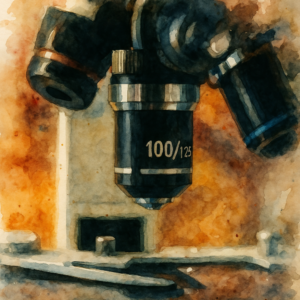Dive into today’s clip – do you know “à la fois” this use of “exhibitionniste”. “on se doutait” and “une sieste crapuleuse”? Hear them all in today’s clip and practice your listening comprehension with French in real life!
Take the quiz, join the conversation.
Did you find this one challenging or easy? Did you hear something diffferent? What surprised you? What levels did you complete? Comment below and share what’s opening up for you with this quiz.
Learn French with a podcast snippet! This clip is is from Transfert s01ep22. We do not own the content. Listen to the entire episode here.
The above audio sample and transcription is from Transfert s01ep22. We do not own the content. Listen to the entire episode here.
we suspected
What’s opening up for you with this clip?
The snippet in English
Find a translation of this snippet here, how much of this did you hear?
Euh… Donc je crois que euh c’était à la fois euh sensuel, tendre, euh c’était jamais exhibitionniste. Quand il y avait des repas de famille, euh ben on savait qu’ils allaient faire une sieste. Et on se doutait bien que c’était une sieste crapuleuse.
Uh… So I think it was, uh, sensual, tender, uh, never exhibitionist. When there were family meals, uh, we knew they were going to take a nap. And we knew it was a dirty nap.
The above translation from Deepl
What does “à la fois” mean?
“À la fois” is a French expression that translates to “at the same time” or “simultaneously” in English. It is used to indicate that multiple characteristics or actions are occurring concurrently or are present in a person or thing simultaneously.
Usage:
- Combining Characteristics or Qualities: When you want to describe something or someone that combines different characteristics or qualities at the same time.
- French example: “Elle est à la fois intelligente et drôle.” (She is both intelligent and funny.)
- Describing Contrasting or Complementary Aspects: It can be used to highlight contrasting or complementary aspects of a situation or individual.
- French example: “Ce film est à la fois triste et inspirant.” (This movie is both sad and inspiring.)
- Simultaneous Actions: When referring to actions that are happening at the same time.
- French example: “Il travaille et écoute de la musique à la fois.” (He is working and listening to music at the same time.)
Context:
- Commonly Used: “À la fois” is a common expression in French, used in both spoken and written language.
- Versatility: It is versatile and can be used in a variety of contexts, from formal to informal settings.
- Emphasizing Complexity or Nuance: It is often used to emphasize the complexity or nuanced nature of a person, thing, or situation, highlighting its multifaceted characteristics.
Examples:
- “Il est à la fois mon ami et mon collègue.” (He is both my friend and my colleague.)
- “Cette chanson est à la fois mélancolique et belle.” (This song is both melancholic and beautiful.)
What does “exhibitionniste” mean?
Meaning: The speaker is reflecting on a particular situation or behavior, emphasizing its sensuality and tenderness, while explicitly stating that it was not exhibitionist in nature.
Usage of “exhibitionniste”: In this context, “exhibitionniste” is used to highlight that the situation or behavior in question was not about showing off or drawing attention to oneself in a flamboyant or provocative manner. It carries a connotation of restraint and intimacy, as opposed to public display.
Nuance: By using “jamais” (never), the speaker strongly negates any association with exhibitionism, reinforcing the idea that the situation was private, intimate, and respectful of boundaries.
Cultural Note: In French culture, as in many others, there is an appreciation for sensuality and tenderness in relationships and interactions. At the same time, there is a clear distinction between private and public behavior, and exhibitionism is generally not condoned.
When the speaker uses “exhibitionniste” in reference to her parents’ tender and loving relationship, it is likely that she is using the term to emphasize the private nature of their affection. She might be saying that while their relationship was full of tenderness and sensuality, it was never showy or displayed inappropriately for others to see. In other words, their love was genuine and intimate, not performed for an audience.
In this case, the speaker is using “exhibitionniste” to draw a contrast between genuine affection and affection that is displayed for attention. She is clarifying that her parents’ love was of the former kind, personal and private, not meant for public display.
So, while “exhibitionniste” indeed carries a negative connotation and is often associated with inappropriate and offensive public exposure, in this specific context, the speaker is using it to make a positive point about the nature of her parents’ relationship. She is essentially saying, “Their love was sensual and tender, but it was never for show; it was never exhibitionist.”
It is important to note that language can be nuanced and context-dependent, and words can sometimes take on different shades of meaning depending on how they are used. In this case, the speaker is using “exhibitionniste” in a somewhat unconventional way to communicate a specific point about the nature of love and affection.
What does “on se doutait bien” mean?
Literal Translation and Meaning:
- Literal Translation: “We suspected well” or “We had a good suspicion.”
- General Meaning: The phrase expresses that there was a strong suspicion or a good intuition about something that turned out to be true or is likely to be true.
Usage in Different Contexts:
- Reflecting on Past Events: Often used to talk about past events where the signs or hints of something were apparent, and people had a good reason to suspect it.
- French Example: “Il a finalement avoué ses sentiments. On se doutait bien, il était tellement attentionné envers elle.” (He finally admitted his feelings. We had a good suspicion; he was so attentive to her.)
- General Observations: Can be used for general observations where people had an intuition or suspicion about something.
- French Example: “Le ciel s’assombrissait, on se doutait bien qu’il allait pleuvoir.” (The sky was darkening; we had a good suspicion that it was going to rain.)
Cultural and Nuanced Notes:
- Common Expression: This is a common expression in French and is used in everyday language.
- Tone: The tone can be neutral, reflective, or sometimes slightly ironic, especially if the suspicion was about something apparent that others might have missed.
Examples:
- “On se doutait bien qu’il avait quelque chose à cacher, il était trop nerveux.” (We had a good suspicion that he had something to hide; he was too nervous.)
- “Quand il a commencé à parler de déménager, on se doutait bien qu’il allait quitter son travail.” (When he started talking about moving, we had a good suspicion that he was going to quit his job.)
In summary, “on se doutait bien” is a French phrase used to express that there was a strong suspicion or intuition about something, which is usually confirmed later or is likely to be true. It is commonly used in everyday language and reflects a tone that can be neutral, reflective, or slightly ironic.
What does “sieste crapuleuse” mean?
Literal Translation and Meaning:
- Literal Translation: “Roguish nap” or “naughty nap.”
- General Meaning: This phrase is used in French to subtly refer to a short period of time spent on intimate, usually sexual, activities, particularly during the daytime when one might otherwise be expected to be taking a nap or a short rest. “Afternoon delight”.
Usage in Different Contexts:
- Informal and Playful: The expression is informal and carries a playful, cheeky tone. It’s often used among adults in a humorous or light-hearted manner.
- “Ils ont pris une petite sieste crapuleuse cet après-midi.” (They had a little naughty nap this afternoon.)
- Couples: Commonly used to refer to intimate moments between couples.
- “Après leur déjeuner romantique, ils ont décidé de faire une sieste crapuleuse.” (After their romantic lunch, they decided to have a naughty nap.)
Cultural and Nuanced Notes:
- Euphemism: “Sieste crapuleuse” serves as a euphemism for sexual activity, using humor and innuendo to address the topic indirectly.
- Light-Hearted: The expression adds a light-hearted, playful element to the conversation about intimacy, reflecting the French culture’s open and sometimes playful attitude towards sex.
- Not Vulgar: While the phrase addresses an adult topic, it is not considered vulgar. However, like any discussion of intimate matters, it requires a certain level of familiarity and comfort between the speakers.
Examples:
- “Ils ont profité de l’absence des enfants pour faire une sieste crapuleuse.” (They took advantage of the children’s absence to have a naughty nap.)
- “On parle souvent de la sieste crapuleuse comme d’un moment de complicité dans le couple.” (We often talk about the naughty nap as a moment of complicity in a couple.)
In summary, “sieste crapuleuse” is a playful, informal French expression used to refer to intimate moments between couples, typically during the day. It reflects a light-hearted and open attitude towards sexuality, and while it addresses an adult theme, it is not considered vulgar.
What is opening up for you?
Comment below with the words you thought you heard, where you struggled, where you surprised yourself, or what you thought about this clip. Every little bit inspires other learners, thank you for being that inspiration to others on their French fluency journey!
Dive into today’s clip – do you know “à la fois” this use of “exhibitionniste”. “on se doutait” and “une sieste crapuleuse”? Hear them all in today’s clip and practice your listening comprehension with French in real life!
Take the quiz, join the conversation.
Did you find this one challenging or easy? Did you hear something diffferent? What surprised you? What levels did you complete? Comment below and share what’s opening up for you with this quiz.









Heya,
I think before “on savait qu’ils allaient” it’s a “ben” not a “donc”.
updated. thank you!